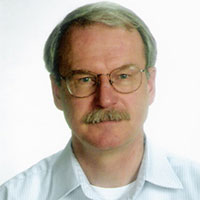Trigger Warning
The Lang fairy books are twenty-five collections of stories for children published between 1889 and 1913 by Andrew Lang and his wife, Leonora Blanche Alleyne. The best-known books of the series are the twelve collections of fairy tales, also known as Andrew Lang’s colored fairy books, or Andrew Lang’s fairy books of many colors, or the rainbow fairy books.
Translated into readable modern English, and beautifully illustrated with black-and-white drawings by several artists, and a few color plates, the Lang fairy books were a great success in their day. With books by the Grimm Brothers, Charles Perrault’s “Mother Goose,” and Hans Christian Andersen, they shaped our idea of fairy tales and folklore. The Lang books are as popular as ever.
A complete first edition of the twelve color fairy books, handsomely bound, is expensive. An online price for the set is $8,000. The Folio Society issued a set with a different design for the hard cover. Dover Publications has a paperback edition, “complete and unabridged, every word, every one of the illustrations.” From Dover, you can buy one book, or the set of twelve for $200.
Andrew Lang (1844-1912) was a Scottish poet, novelist, and literary critic. He edited the first books in the series, and he wrote prefaces for the entire run. Lang’s wife, the translator and author Leonora Blanche Alleyne (1851-1933), known to friends and family as Nora, edited the series from the 1890s onward. She and others translated and retold the stories, chosen from published sources worldwide.
Anita Silvey in her 1995 Children’s Books and Their Creators, writes: “The irony of Lang’s life and work is that although he wrote for a profession—literary criticism, fiction, poems, books and articles on anthropology, mythology, history, and travel . . . he is best recognized for the works he did not write.”
The term “fairy tale” is misleading, as fairies do not appear in all the stories. And some of the stories are realistic tales of adventure and heroism, rather than magic and marvels. Lang called these “true” stories, drawn from European history, and he collected them in The True Story Book.
Lang wrote in the preface to The Blue Fairy Book, the first in the series, “The tales in this volume are intended for children.” He bowdlerized the texts, setting off a controversy that continues to this day. Should books for children protect them from harsh reality, or teach them about it? Should literature teach moral lessons, to children or anyone?
Lang was known as a folklorist. His own experience was with the folk and fairy tales of his home territory along the Anglo-Scottish border. British fairy tale collections were rare at the time. Iona and Peter Opie, in their 1974 book The Classic Fairy Tales, provide short histories of publication, along with original texts and illustrations. The subject is almost as fascinating as the tales.
The Lang books turn up in libraries, used book stores, and the guest bedrooms of especially thoughtful hosts. Maybe you read and loved them as a child. Or maybe you were unlucky. It’s never too late to catch up!
